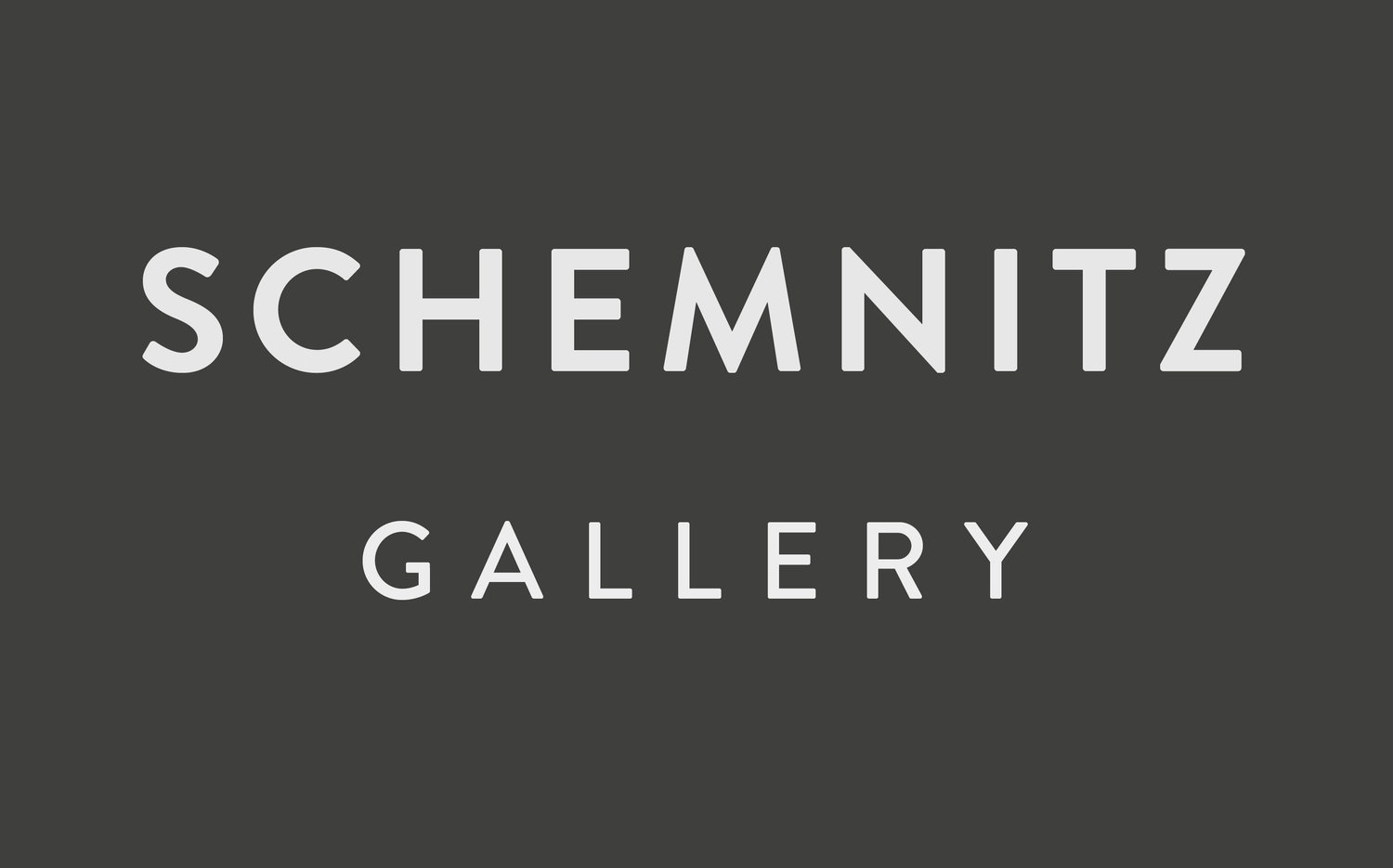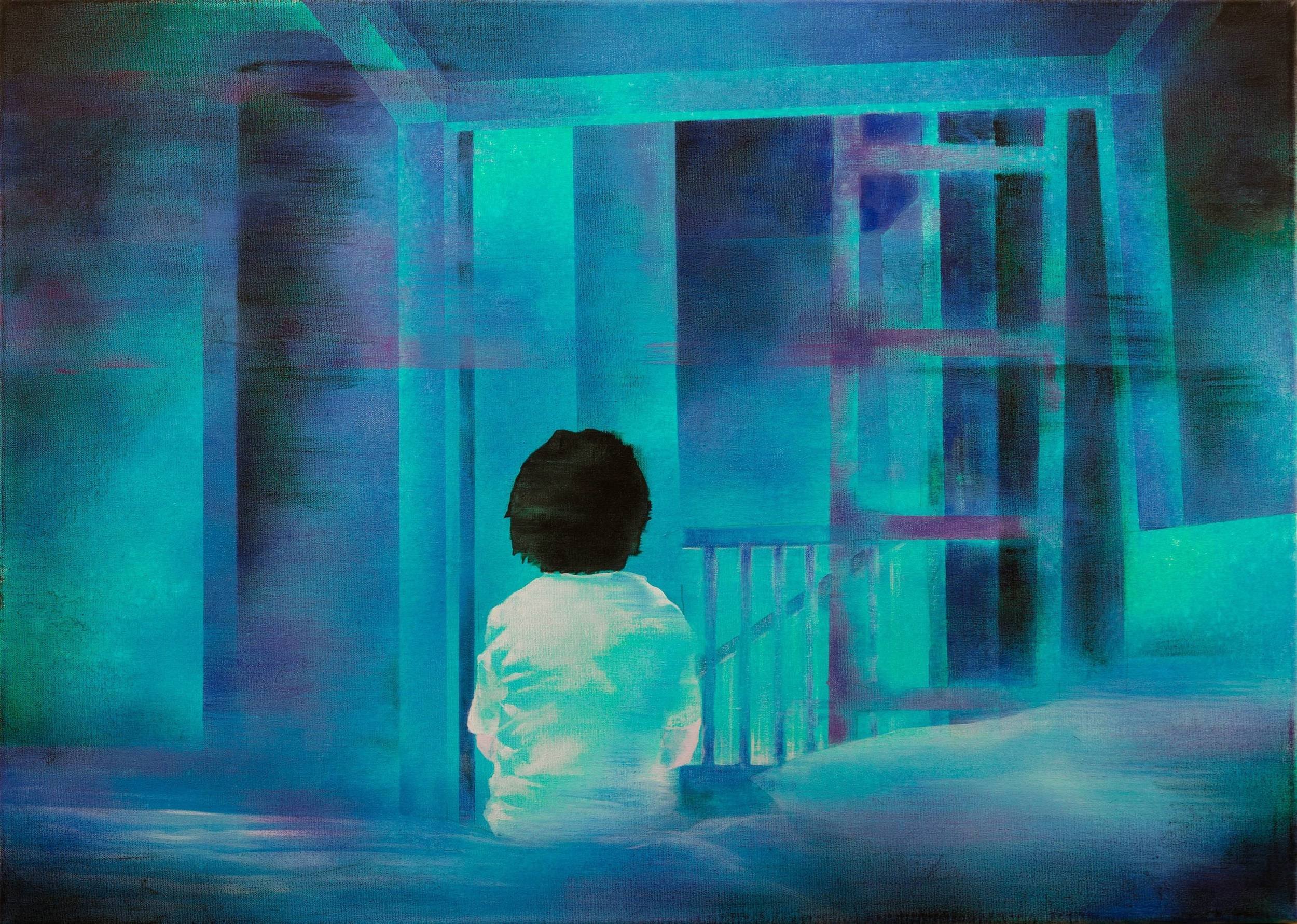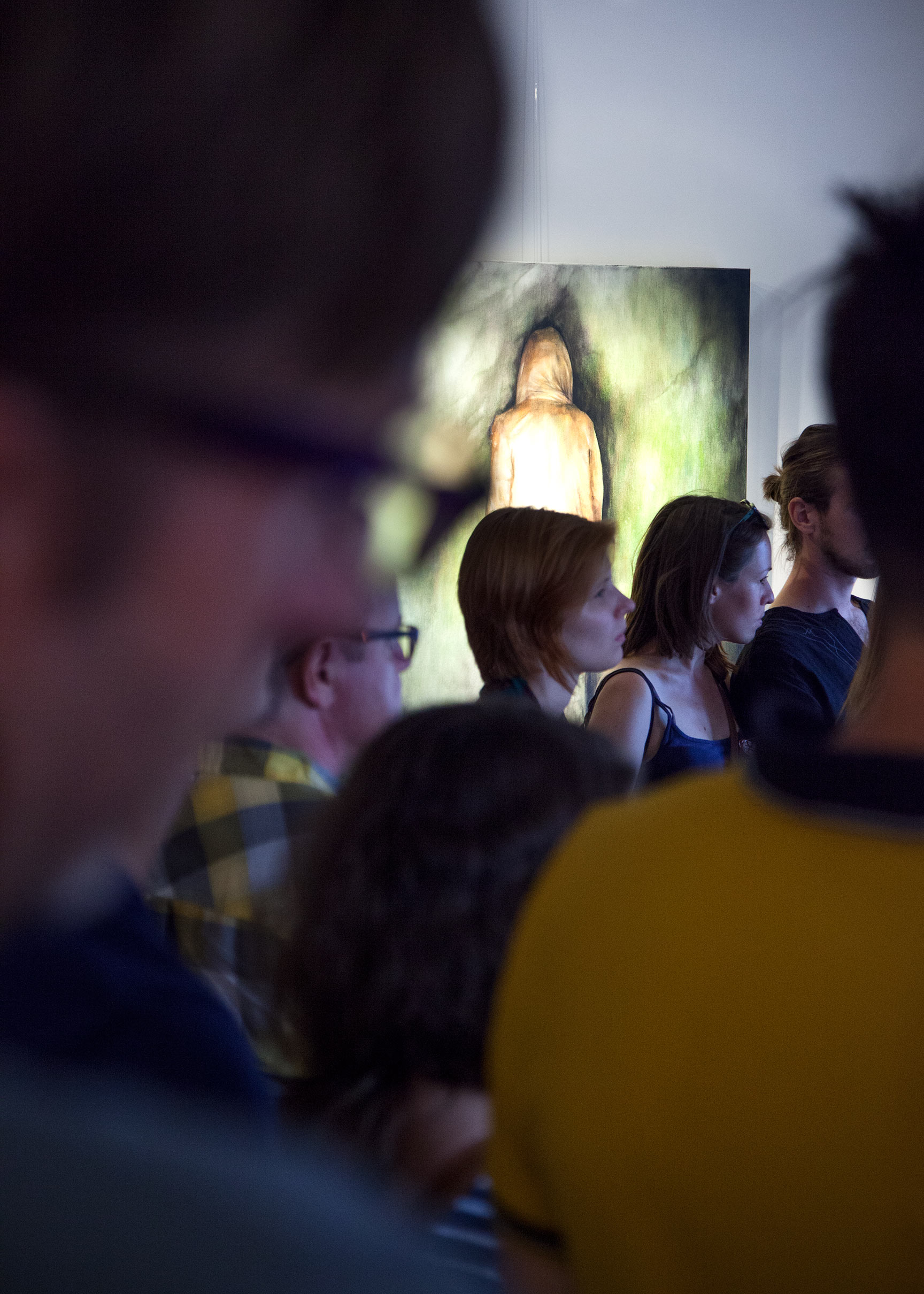Boris Sirka
Fire walk with me
Kurátorka: Diana Majdáková
Vernisáž: 18.7.2014 o 19:00 hod.
Výstava: 18.7.2014 - 25.8.2014
Boris Sirka (1981) patrí v rámci slovenskej mladej maľby k najcharakterovejším autorom. Zásadný preň je najmä zvolený tematický záber, ktorého možnosti neustále nanovo objavuje a posúva do nových rovín. Opakovane spracováva temné témy inšpirované literárnymi či filmovými predlohami, alebo (urbánnymi) legendami rôznych kultúr. Sirku fascinuje horor, duchárske historky, desivé príbehy a povery a celá škála subkultúrnych motívov, ktoré podáva vo vysoko esteticky prepracovanej forme. Stiera tak rozdiel medzi pokleslými polohami tvorivosti a tzv. vysokým umením. Pracuje v ohraničených, uzatvorených cykloch, ktorých zmeny znamenajú vždy striktný prechod medzi štýlmi, náhlu zmenu výtvarného vyjadrovania alebo techniky a novú tematickú oblasť.
Na výstave Fire walk with me sú predstavené diela vybrané z posledných dvoch autorových sérií. Experimentuje v nich najmä s priestorom a utlmením predošlej príbehovosti vyjadrovanej postavami a dejom. Pohráva sa s kvalitami “bieleho šumu” VHS pásky, ktorý spôsobuje prelínanie viacerých časopriestorových rovín záznamu, alebo s bližšie nevysvetliteľnými úkazmi na nečakaných, vyľudnených miestach. Hororová desivosť sa vytráca v prospech jemnejšej, menej ilustratívnej tajomnosti. Sirkove obrazy sa mrazivo pohrávajú sa s ľudskou predstavivosťou, ktorá je hlavným producentom neidentifikovateľného strachu z nevideného, zmyslami iba tušeného sveta.
Boris Sirka is one of the most characteristic artists in Slovak young painting. His chosen thematic scope is particularly important for him, whose possibilities he constantly rediscovers and pushes into new planes. Repeatedly, he treats dark themes inspired by literary or cinematic models or (urban) legends of different cultures. Sirk is fascinated by horror, ghost stories, frightening tales and superstitions, and a whole range of subcultural motifs, which he renders in a highly aesthetically sophisticated form. In this way, he blurs the distinction between the lowered realms of creativity and so-called high art. He works in limited, closed cycles, whose changes always imply a strict transition between styles, a sudden change in artistic expression or technique, and a new thematic area.
The exhibition Fire walk with me presents works selected from the artist's last two series. In them, he experiments mainly with space and the subduing of the previous narrativity expressed by characters and plot. He plays with the qualities of the "white noise" of VHS tape, which causes the blending of several spatiotemporal planes of the recording, or with unexplained phenomena in unexpected, depopulated places. Horror's eeriness fades away in favor of a more subtle, less graphic mystery. Sirk's paintings play chillingly with the human imagination, which is the chief producer of an unidentifiable fear of an unseen, senses-only sensed world.
“…té síly díl jsem já, jež, chtíc vždy páchat zlo, vždy dobro vykoná.“
/Die stets das Böse will und stets das Gute schaft.” (Johann Wolfgang Goethe: Faust, Mephistopheles, 1335–6.)/
Gotika v umení - návrat stredoveku?
Ak hovoríme o súčasnej “gotike”, nemáme na mysli romantické napodobovanie architektúry s lomenými klenbami, produkciu krucifixov ani anemických madon. Pojem “gotický” chápeme skôr ako široký prúd uvažovania vlastný veľkej časti umelcov poslednej dekády. Príklon k temným, dekadentným témam, psychoanalytické či arteterapeutické motivácie tvorby, preberanie vizuálnych znakov subkultúr a okrajových umeleckých žánrov, ale aj pop-kultúrne vplyvy v radikalizovanej podobe, sú len niektoré z mnohých charakteristík súčasnej “gotiky”. Teória umenia za veľký zlom považuje 9/11 (pád dvojičiek), ktorý v celej, v danom období pomerne pokojnej, pretechnizovanej a intelektualizovanej euroamerickej kultúre vyvolal otras. Devastačný stret s náboženským fanatizmom, pocit ohrozenia zdanlivo bezpečného sveta, nepochopiteľné narušenie sterilnej každodennosti, vyvolali vo veľkej časti spoločnosti nový strach a neistotu. Reakciou bol únik k novému romantizmu, hľadanie koreňov vlastnej identity, útek z reality k nadprirodzeným bytostiam, ale aj skúmanie a ohmatávanie vlastných frustrácií a paranojí. Nastúpila obrovská vlna návratu k fantasy žánru prinášajúca nekonečne veľa variácií vampírskej tematiky, pseudohistorických fikcií a fascináciu paranormálnymi javmi. Táto tendencia neobišla ani výtvarných umelcov. Naopak, zdá sa, že mnoho zo zásadných diel formujúcich súčasnú gotiku patrí práve do sféry vizuálneho umenia. Do tohto širokého kontextu sa dá zaradiť aj tvorba Borisa Sirku.
Temnota Borisa Sirku
Ako maliara Sirku charakterizujú dve dôležité vlastnosti - prvou je neustále zotrvávanie v jednej zvolenej téme (“bombardovanie toho istého políčka”) a druhou vysoká miera estetického hedonizmu (inými slovami “užívanie si” výtvarného spracovania obrazu). Prvá sa prejavuje neustálym hľadaním a testovaním, kam ho vytýčená tematická oblasť ešte môže priviesť. Už počas štúdia sa rozhodol pre námety vychádzajúce zo sveta komiksu a pornografie. Obrazy mladého výtvarníka obsahovali poriadnu dávku sexuálnej agresivity a provokatívnosti. Zdrojom výtvarného výrazu bola preňho najmä digitálna grafika, anime a manga “Ein Teil von jener Kraft, 1 Die stets das Böse will und stets das Gute schaft.” (Johann Wolfgang Goethe: Faust, Mephistopheles, 1335–6.) komiksy alebo počítačové hry. Prejavovali sa v podobe čistých, ostro vymedzených plôch a tiež vo výraznej, svietivej farebnosti akrylovej maľby. V istom momente však nastal radikálny zlom a zmena maliarskeho jazyka. A potom sa to stalo ešte niekoľkokrát. Sirka tvorí v jasne ohraničených cykloch, pri ktorých nemení iba techniku a celkový výraz svojich malieb, ale jemne sa posúva aj v témach. Stále však zotrváva v role maliara temných námetov, hororových scén, desivých postáv, duchariny a nočných môr… Pri skúmaní jeho tvorby narazíme na dva paradoxné momenty. V prvom rade sa pri správnom odstupe nedá prehliadnuť humor a nadhľad, s ktorým sa do daných tém púšťa. Istý nádych grotesknosti je vlastný celému hororovému žánru, ktorý je v skutočnosti predovšetkým súčasťou “zábavného” priemyslu (každý správny lunapark má svoj “zámok hrôzy”…a správni hororoví fajnšmekri sa pri desivých momentoch dokážu zľahka usmievať). Je výnimočné vidieť v podstate trochu pokleslý, “béčkový” žáner hororu vo vysoko kvalitnom obrazovom podaní. Elegancia umeleckého prejavu tvorí druhý osobitý moment Sirkovej tvorby. Nenájdeme v nej existenciálnu úzkosť Munchovho výkriku, ťažké svedectvá Goyových hrôz, ani divokosť povojnového expresionizmu. Ťažko by sme v jeho rukopise hľadali stopy po divokých emocionálnych poryvoch. Sirka sa so svojimi obrazmi hrá do posledného detailu, k tvorbe pristupuje ako ku krok po kroku naplánovanej práci. Nezáleží na veľkosti plochy plátna, každý jeho centimeter je dokonale premyslený a výtvarne spracovaný. Sirka teda nemaľuje pocitovo ani spontánne (aspoň nie v prvom pláne), svoje obrazy vopred starostlivo skicuje a takmer divadelne či filmovo inscenuje. Vplyv tohto prístupu by sa dal hľadať v jeho hlavnom inšpiračnom zdroji, ktorý má najviac styčných bodov s filmovým hororom či thrillerom. Jeho maľby sú budované v dvoch hlavných vrstvách. Dôležitá je tak autorova scénická obrazotvornosť, ako aj rukodielnosť a priam obsedantne precízna výtvarnícka práca. Z toho dôvodu často mení výtvarné techniky či médiá, čo má vplyv na charakter jednotlivých sérií jeho tvorby. Väčšinou však ostáva pri závesnom obraze, maľbe, grafike a kresbe. Prístup k práci pripomínajúci až meditačné techniky nie je bez vplyvu ázijskej kultúry. Sirku dlhodobo fascinuje najmä Japonsko, a to nielen sklonom k prepracovanej technickej a vizuálnej stránke obrazu, ale aj z hľadiska atmosféry a námetov. Časom utlmil aj svoju takpovediac viktoriánsky-vampírsku (a teda krvavú a erotickú) temnotu. Japonský horor je známy svojou mrazivosťou, ktorá neútočí prvoplánovo, ale rozlieva sa v človeku postupne a udiera v nečakanej chvíli. Rovnaký princíp autor uplatňuje aj vo svojich neskorších maľbách. V jednom z posledných cyklov celkom odišiel od svojej typickej fantastickej figuratívnosti. Nositeľom tajomnej, až duchárskej atmosféry sa stala drapéria voľne rozpohybovaná v priestore nešpecifikovaného interiéru. Blízkosť k filmovému médiu je u Sirku stále citeľnejšia. V nedávnom cykle “Found footage” sa zaoberal obrazovými posunmi spôsobenými nedokonalosťou dnes už zastaraného média VHS-pásky. Vizuálny šum a prelínanie vzájomne nesúvisiacich obrazov je často používaný aj ako technika na navodenie strašidelnej atmosféry (spomeňme si napríklad na horory Kruh, Blair Witch alebo Paranormálne aktivity). Narúšanie tvárí a ich prelínanie s iným obrazovým materiálom, neistá časová orientácia, ale ani funkčné a žánrové zaradenie obrazu - spôsobujú zvlášntu neistotu, očakávanie ďalšieho deja, zvedavosť. Posledná Sirkova tvorba sa opäť miernym oblúkom vracia k rozpracovávaniu krajinárskych tém, skúmaniu priestoru a jeho vplyvu na mentálne rozpoloženie vnímateľa. Do krajiny zasadzuje hlavy prerastajúce bližšie nešpecifikovateľné budovy, opustené v temnom poraste lesa. Moment “uncanny” (divnosti, odcudzenia) je rozvinutý až do mierne grotesknej polohy. Prepracovanie a typická Sirkova elegancia výrazu (v neposlednom rade až erotické vyžarovanie zobrazených žien) však zároveň umožňuje balansovanie na hrane hrôzostrašnosti a príjemného vizuálneho zážitku. Diana Majdáková kurátorka výstavy Fire walk with me
Gothic in Art - A Return to the Middle Ages?
When we talk about contemporary "gothic," we do not mean the romantic imitation of architecture with pointed arches, the production of crucifixes or anemic madonnas. We understand the term "gothic" rather as a broad stream of thinking characteristic of a large part of the artists of the last decade. The inclination to dark, decadent themes, psychoanalytic or art-therapeutic motivations of creation, the adoption of visual signs of subcultures and marginal artistic genres, as well as pop-cultural influences in a radicalized form, are only some of the many characteristics of contemporary "gothic." Art theory considers 9/11 (the fall of the twin towers) to be a major turning point, which caused a shock in the whole, in that period relatively calm, over-technologized and intellectualized Euro-American culture. The devastating clash with religious fanaticism, the feeling of threat to a seemingly safe world, the incomprehensible disruption of sterile everyday life, evoked new fear and uncertainty in a large part of society. The reaction was an escape to a new romanticism, a search for the roots of one's own identity, an escape from reality to supernatural beings, as well as the exploration and groping of one's own frustrations and paranoias. A huge wave of return to the fantasy genre ensued, bringing an infinite number of variations of vampire themes, pseudo-historical fictions and fascination with paranormal phenomena. This tendency did not bypass visual artists either. On the contrary, it seems that many of the fundamental works forming contemporary gothic belong precisely to the sphere of visual art. The work of Boris Sirka can also be included in this broad context.
The Darkness of Boris Sirka
As a painter, Sirka is characterized by two important qualities - the first is the constant persistence in one chosen theme ("bombarding the same field") and the second is a high degree of aesthetic hedonism (in other words, "enjoying" the artistic processing of the image). The first is manifested in the constant search and testing of where the defined thematic area can still lead him. Already during his studies, he decided on themes based on the world of comics and pornography. The paintings of the young artist contained a good dose of sexual aggressiveness and provocativeness. The source of his artistic expression was mainly digital graphics, anime and manga "Ein Teil von jener Kraft, 1 Die stets das Böse will und stets das Gute schaft." (Johann Wolfgang Goethe: Faust, Mephistopheles, 1335–6.) comics or computer games. They were manifested in the form of clean, sharply defined areas and also in the expressive, bright colors of acrylic painting. At a certain moment, however, there was a radical break and a change in the painting language. And then it happened several more times. Sirka creates in clearly defined cycles, in which he not only changes the technique and the overall expression of his paintings, but also subtly shifts in themes. However, he still remains in the role of a painter of dark themes, horror scenes, terrifying figures, ghosts and nightmares... When examining his work, we come across two paradoxical moments. In the first place, with the right distance, one cannot overlook the humor and detachment with which he embarks on the given themes. A certain touch of grotesqueness is inherent in the entire horror genre, which is actually primarily part of the "entertainment" industry (every proper amusement park has its "horror castle"...and proper horror connoisseurs can easily smile at terrifying moments). It is exceptional to see a basically slightly inferior, "B-movie" genre of horror in a high-quality pictorial presentation. The elegance of the artistic expression forms the second distinctive moment of Sirka's work. We will not find in it the existential anxiety of Munch's Scream, the heavy testimonies of Goya's horrors, nor the wildness of post-war expressionism. We would hardly find traces of wild emotional outbursts in his handwriting. Sirka plays with his images down to the last detail, approaching his work as a step-by-step planned work. Regardless of the size of the canvas area, every centimeter of it is perfectly thought out and artistically processed. Sirka therefore does not paint intuitively or spontaneously (at least not in the first place), he carefully sketches his images in advance and stages them almost theatrically or cinematically. The influence of this approach could be sought in his main source of inspiration, which has the most points of contact with film horror or thriller. His paintings are built in two main layers. The author's scenic imagery is as important as the craftsmanship and almost obsessively precise artistic work. For this reason, he often changes artistic techniques or media, which has an impact on the character of the individual series of his work. Mostly, however, he stays with the hanging picture, painting, graphics and drawing. The approach to work resembling even meditation techniques is not without the influence of Asian culture. Sirka has long been fascinated by Japan, not only in terms of the inclination to the elaborate technical and visual aspect of the image, but also in terms of atmosphere and themes. Over time, he also toned down his so-called Victorian-vampire (and therefore bloody and erotic) darkness. Japanese horror is known for its chilling quality, which does not attack in a straightforward way, but spreads in a person gradually and strikes at an unexpected moment. The author applies the same principle in his later paintings. In one of the last cycles, he completely departed from his typical fantastic figuralism. The bearer of the mysterious, even ghostly atmosphere became drapery freely moving in the space of an unspecified interior. The proximity to the film medium is still more noticeable in Sirka's work. In the recent "Found footage" cycle, he dealt with the image shifts caused by the imperfection of the now obsolete VHS tape medium. Visual noise and the intermingling of unrelated images is often used as a technique to create a scary atmosphere (let us recall, for example, the horrors The Ring, Blair Witch or Paranormal Activities). The disruption of faces and their intermingling with other pictorial material, uncertain time orientation, nor functional and genre classification of the image - cause a strange uncertainty, anticipation of further action, curiosity. Sirka's latest work again makes a slight arc back to the elaboration of landscape themes, the exploration of space and its influence on the mental state of the viewer. In the landscape, he places heads overgrowing unspecified buildings, abandoned in the dark forest. The moment of "uncanny" (strangeness, alienation) is developed to a slightly grotesque position. However, the elaboration and Sirka's typical elegance of expression (not least the almost erotic radiation of the depicted women) at the same time allows balancing on the edge of horror and a pleasant visual experience. Diana Majdáková curator of the Fire walk with me exhibition.





















